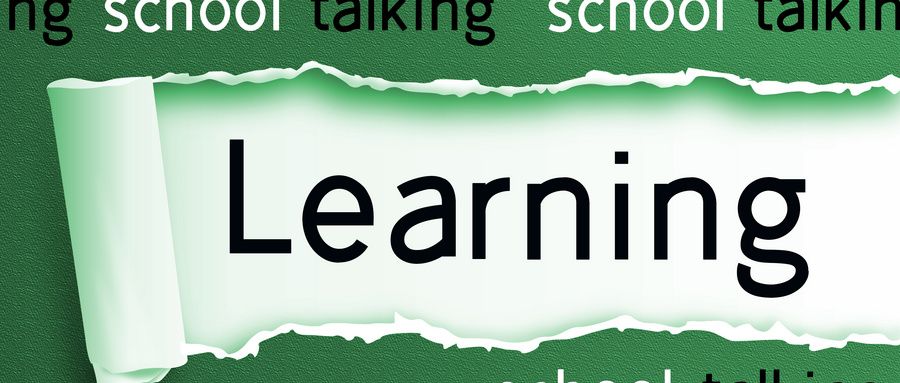高中英语:完形填空整体分析和答题技巧
“完型填空”的错误率在高中各类英语题型中是相对偏高的。本文为大家整理了完形填空的各种题型和答题技巧,帮助大家提高做题正确率!
一、常见体裁
(一)记叙文——情节性
1、特点:故事性、情节性、理解较容易。
2、明确六个要素:时间、地点、人物、故事的发生、发展和结局。
3、核心:故事的展开。
4、做题:明确事件内容、理清故事发展线索。
(二)说明文——条理性
了解主题明确条理是关键。认知过程从段落、分层次、分要点等逐步展开。
(三)议论文——逻辑性
了解观点(论点)和论据(道理)。阐述观点,自圆其说(正反双方),环环相扣,表达严谨。
(四)常见题材
社会生活、人物传记、科技文化、历史地理、政治经济。因此考生平时要广闻博览、针对性阅读,丰富阅读面。
二、题目设计特点
(一)首句不设空
(二)上下文逻辑关系
完形填空不仅考察词汇、搭配、语法等独立知识,而且还考察它们不同语境下构成的相应意义。做完形填空试题时必须首先明确上下文的的逻辑关系和意义。
1、因果:as a result, consequently, thus, therefore,for this reason, for that reason, because of, on account of, so that, due to,owing to…
2、列举:for instance, for example, that is , namely,specifically, one example is , such as…
3、递进:not only…but also,,,. as well as, moreover,besides, and, neither…nor…, both…and…
4、比较:compare with / to, like, in the same way,similarly, unlike, as well as, by contrast…
5、对比:although, while, but, but at the same time,despite, even so, even though, for all that, however, in contrast, in spite of, nevertheless, on the contrary, on the other hand, regardless, still, though,yet…
6、强调:indeed, certainly, above all, in addition, infact, after all, especially, (in) particular (ly), it is true, of course…
7、条件:if, in case, suppose, provided that, as longas…
8、时间:after that, from now on, next, fromthen on, first, then, secondly, finally, former, previous, meantime, since,since then, after a while, soon, as soon as, before, earlier, until,immediately, in the past, lately, now , shortly, so far, when…
9、空间:over, above, inside, outside, beside, across,between, before, below, close to, in front of, in the center of, nearby,nearto, on top of, on the other side, opposite to, to the east,to the left…
10、转折:but, however, on the other hand, nevertheless,whereas, whereas, while, yet, still, although, even though,in spite of…
11、顺序:again, also, and, and then, besides, equallyimportant, finally, first, further, further more, in addition, in the firstplace, last, moreover, next, second, still, too…
12、总结:in short, in a word, to sum up, inconclusion, in other words, in summary, on the whole…
(三)语义干扰
设置语义干扰可以在有限篇幅尽可能地多考察知识点、语言点,全面考查语言功底和语言运用能力。
1.词义相近
例1:Then we wouldn’t need to go to class. Professors should15repeating inlectures material that is in the textbook. “Once we’ve read the material, we want to discuss it or hear it elaborated on, not repeated.”
A) refuse B) prohibit
C) prevent D) avoid
例2:Friendship appears to be a unique form of human bonding.Unlike marriage or the ties that bind parents and children, it is not defined or regulated by8.
A) discipline B) law
C) rule D) regulation
2.词性相同
We sat at the dinner table in silence, preferring that to89in a difficult language.
A) telling B) uttering
C) saying D) speaking
3.词形相近
Unlike math or science, ignorance of history cannot be easily connected to loss of international74.
A) competitiveness B) comprehension
C) community D) commitment
4.语法结构
…but a bird has a single alarm cry,75means“danger!”
A) this B) that C) which D) it
(四)语法知识
常考语法项目有:
1、名次单复数;2、动词的时态和语态;
3、形容词和副词的一般级、比较级和最高级;
4、分词结构和不定式;
5、定语从句;6、宾语从句;
7、虚拟语气;8、倒装结构。
(五)习惯用法与固定搭配
Students can learn the right answers82heart inclass,and yet never combined them 83 their workingmodels ofthe world.
A) to B)by
C) in D) with
(六)词汇辨析
Sitting in the theatre I had to look through the performance between the two tall heads in front of me. I had to keep changing the position every time she leaned over to talk to him. Why do Americansdisplay such75in a public place ?
A) attraction B) attention
C) affection D) motion
三、解题策略与应试技巧
(一)通读全文:
完形填空离不开文章,解题离不开上下文。通读,了解文章大意,才能做到有的放矢。
(二)重视首句:
文章第一句话很重要,有指导性作用,理解中心思想。
(三)分析文章结构及展开方式:
体裁分析。记叙文要把握故事发展脉络;说明文要搞清文章范畴;议论文明确论点理顺论证方式。
(四)分析文章时态:
时态提供了有效的背景信息,对选择正确答案有提示作用。
Since we4all morning and were now feeling very tired, it's a pleasure to sit down.
A) shopped
B) had been shopping
C) were shopping
D) have been shopping
18the late 1970s, many shoppingmalls had almost developed into small cities themselves.
A) By B) During
C) In D) Towards
(五)寻找信息词:
一种反复出现的信息词是提示文章中心内容的关键词。另一种则在一句或一段话中有暗示作用。
No one, least 4 all management, wants to listen to hysterical roar (歇斯底里的咆哮).
A) over B) on
C) of D) towards
(六)借助语法知识:
1.名词单复数
arm---arms; glass---glasses; time---times;paper---papers;fruit---fruits; food---foods; silk---silks; fish---fishes.
2.形容词和副词的一般级、比较级和最高级
(1)同级:as/so…as; not so … as;not as…as…
(2)比较:twice,four times, ten times等 与as…as结构
a bit, a little, slightly, a great deal, a lot, many,much=不定量;
far, completely, still=程度进一步—
(3)最高:oneof…of/ among all +三者以上名词/代词
3.动词的时态和语态
全文时态、上下文关系以及时间状语很重要。
4.分词结构和动词不定式
现在分词和过去分词:主动和被动;现在和完成, 作状语。表示时间、原因、条件、伴随;也可作定语修饰名词;注意分词和逻辑主语搭配。
The more significant the task is , the more careful the planning4.
A) making B) prepared
C) required D) looks
5.定语从句
(1)关系代词和关系副词
Through these less direct routes, longer and slower,they generally go to places18the air is clean and the scenery is beautiful.
A) there B) when
C) which D) where
(2)限制性和非限制性定语从句
(3)只能用that作为定语从句的关系代词的情况
a. there be句型中只能用that,不用which;
b. 不定代词anything, nothing, the one, all, much, few,any, little只能用that,不用which;
c. 先行词有the only, the very修饰时用that;
d. 先行词为序数词、数词、形容词最高级时用that;
e. 先行词既有人又有物时要用that。
6.宾语从句
(1)引导宾语从句的各种连词
a. 连词that起连词作用,不作句子成分,口语中省略;
b. 连词if , whether 起连接作用,不作句子成分,意义为“是否”,口语省略。
c. 连接代词who, whom, whose, which和连接副词when, where, why, how起连接作用,在句子中作成分,各自有各自意义。
(2)宾语从句的语序:“主句+连接词+主语+谓语”
(3)主句与从句在时态上的呼应
如果主句为现在时态,从句时态由实际情况决定;如果主句为过去时态,从句时态要随之变化。
7.虚拟语气
(1)用于条件状语从句时,主句和从句谓语形式:
a.与过去事实相反:
从句:had+过去分词,
主句:should/would/could/might + have +过去分词;
b.与现在事实相反:
从句:一般过去时(be用were),
主句:would/should/could/might +动词原形;
c.与将来事实相反:
从句:一般过去时或should/were to+动词原形
主句:would/should/could/might +动词原形;
(2)用于主语、表语、同位语、宾语从句时,注意“主观愿望”的表达
8.倒装结构
(1)部分倒装
a. 句首有否定词时,句子要倒装;
b. so+adj./adv. 放在句首时表示程度,句子要倒装;
c. 虚拟语气条件句省略if 时,条件句主谓部分倒装;
d. 由as 和however (no matterhow)让步从句倒装;
e. “only +状语”置于句首时句子(从句)要倒装
f. “so/ such…that…”结构用于句首时句子要倒装。
(2)全部倒装
a.以介词开头的地点状语置于句首;
b.副词out, in, along, then, now, up, down, away,here, there等位于句首;
c.代词so, neither, nor, no more 置于句首
(七)瞻前顾后,灵活答题
完形填空答题绝对不能“目光短浅,就事论事”。正确的选择答案离不开句子,更离不开整篇文章。要多看看上下文,多从各个角度考虑和分析。
(八)复校全篇
做完之后要重新审视。首先浏览一遍文章再答题。选择之后放在原文中上下阅读寻找感觉。
综上所述,选词思路与技巧如下:
1、语篇:
(1)是否符合本句或上下文逻辑;
(2)是否对上下文补充说明;
(3)是否上下文有对比或对照关系;
(4)是否为因果关系。
2、语法:
(1)是否特殊句式;
(2)主谓是否一致;
(3)词或词组的搭配是否正确;
(4)动词(特别是非谓语动词)的用法是否正确;
(5)是否需加词,实现句子连接或转换。
3、考点
(1)理解主旨大意;
(2)寻读具体信息;
(3)理解细节;
(4)根据上下文提供语境推测生词词义,进而加深对文段的理解;
(5)简单的判断和推理;
(6)理解文段的基本逻辑结构;
(7)理解作者的意图和态度;
(8)理解文段的文化信息:词汇语法熟练程度
推荐课程
-

达州励学高三生物一对一补习班 教学点:1个 人气:562
-

达州励学高三理科一对一辅导班 教学点:1个 人气:462
-

达州励学高一全科一对一补习班 教学点:1个 人气:450
-

达州励学高三物理一对一辅导班 教学点:1个 人气:442
-

达州励学高三化学一对一补课班 教学点:1个 人气:392
-

达州励学高三文科一对一补习班 教学点:1个 人气:389
学习资料
关于我们 | 联系我们 | 咨询电话:4006-303-880
川ICP备07505283号
以上信息知识产权归“达州励学个性化培训学校”所有,并对内容的真实性和合法性负责,如有侵权或投诉,请联系我们处理。